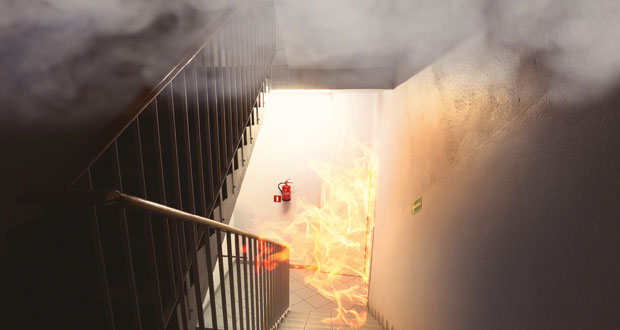 Conor Logan, Technical Director, Colt International on the hidden dangers of neglecting smoke control system maintenance
Conor Logan, Technical Director, Colt International on the hidden dangers of neglecting smoke control system maintenance
In September the Grenfell Inquiry concluded with the publication of the Phase 2 Report. Anyone who listened to the summary from the Inquiry led by Sir Martin Moore-Bick should not have failed to have been moved to strive to design, build, manage and maintain buildings better, particularly those buildings where people live. Anyone involved in fire safety in high rise residential buildings that did not listen to the summary, I urge you to do so. Everyone should have the right to sleep in their homes without having to be concerned with whether it has been built properly and with the right materials.
The emphasis now must be to make sure that buildings are designed and built correctly and maintained in good working order.
SMOKE CONTROL ISSUES
From a smoke control point of view, the report highlights failings in the design process, namely not recording adequately the basis for the system design but also the lack of computational fluid dynamics (CFD) analysis to verify the smoke control system performance.
When a smoke control system is designed to a prescriptive requirement, the design is relatively straightforward and the requirements are well defined. Fan assisted shaft systems or mechanical smoke ventilation systems (MSVS) for smoke control in lobbies and corridors are generally not prescriptive. This means that the design should take in to account all manner of variables, from the building geometry to the type of fire load and a timeline of events. This is generally termed a performance based’ design and it is normal accepted practice that a designer would verify or validate their design using a CFD analysis.
REGULATORY REQUIREMENTS
Also questioned was the ongoing maintenance of the smoke control system. The Regulatory Reform (Fire Safety) Order in conjunction with the Fire Safety Act is the legislation in place in England and Wales which deals with buildings in occupation, which requires, by law, that all life safety provisions are tested and maintained in good working order. Similar legislation, the Fire (Scotland) Act and the Fire Safety Regulations (Northern Ireland) also apply in other regions.
The basic premise for a smoke control system is that it is tested regularly to ensure it is functioning correctly and maintained by competent professionals.
The responsibility starts with the building manager/FM ensuring the safety of occupants are a top priority. The responsible person must select and appoint a competent service organisation with the right skills for the system. Smoke control systems are often complex in nature and frequently concealed from view, often hidden in walls and ductwork, meaning they are sometimes missed or forgotten. Due to patchy record-keeping, some building managers may not even realise that they have these types of systems installed in their buildings and therefore inadvertently overlook their maintenance and repair.
Smoke ventilation systems are installed in a wide range of building types (most typically multi-storey or larger public buildings like shopping centres) and are designed to protect lives and occasionally property in the event of a fire – ignoring their maintenance can lead to catastrophic consequences.
Smoke ventilation systems are used to remove heat and smoke from buildings during a fire. They keep escape routes clear for people evacuating the building and create access routes into the building safer for the firefighting service and first responders. This enables them to reach those in need and the source of the fire more quickly.
Below we explore the hidden dangers of neglecting smoke control system repairs and why proactive maintenance is essential for any building.
1. Compromised Life Safety
Perhaps the most significant danger of ignoring smoke control system repairs is the compromised life safety of building occupants. Smoke control systems play a vital role in managing smoke and toxic gases during a fire, allowing occupants to evacuate safely and providing time for firefighters to control the blaze. Without properly functioning systems, smoke can spread rapidly, obscuring exit routes and making it difficult for people to escape. In a worst case scenario, this can result in injuries or even fatalities.
2. Legal and Regulatory Compliance
In England and Wales, as mentioned opposite, building managers must follow the guidance and regulations laid out in The Regulatory Reform (Fire Safety) Order 2005 (RRO). It states that the “Responsible Person” (typically a building owner and/or operator) must ensure their smoke control systems are always maintained in efficient working order and in good repair. Neglecting smoke control system repairs can lead to violations of these regulations, potentially resulting in legal consequences and fines for those responsible. Moreover, insurance companies may deny claims if it is determined that the building owner failed to maintain the smoke control system properly.





